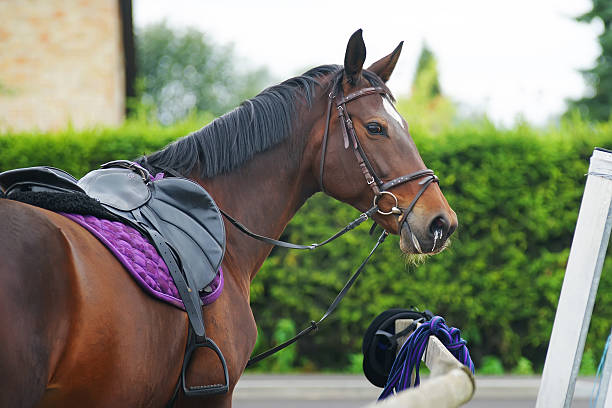Horse head collars may not show up all that critical to fledglings, however, veteran horse riders realize that a head collar is a helpful apparatus that all riders need to remember for their tack. An ideal head collar comprises a headpiece, alongside a noseband, and the whole thing is to be clasped around the top of your horse.
You should remember that a head collar should be utilized cautiously—a horse shouldn’t get harmed simultaneously!
The Size Matters
You’ll have to pick Horse Head Collars that fit appropriately. Assuming the head collar is excessively short, it’ll be tight, just as awkward. A tight head collar may likewise prompt skin bothering and rashes. Then again, on the off chance that the head collar is excessively free, it may slip and may even get trapped in some fencing.
Assuming you’re not mindful of the proper size for a head collar, you can ask the individuals who effectively own horses for some important counsel. Various sizes of head collars are needed for various kinds of horses. Luckily, head collars typically accompany clasped lashes that will permit you to make little changes.
Here’s a helpful hint: Don’t eliminate the labels from a head collar until you’re certain that it accommodates your equine companion appropriately. After the head collar has been put on, ensure the noseband isn’t excessively cozy. In the event that it is, it’ll limit the horse’s development. Around there, the horse will not have the option to eat, drink or move without limitation.
You’ll have the choice of choosing head collars with flexible nosebands. Such head collars are simple for a horse to wear and can be fixed or released without trouble. You can get such head collars from any horse-riding shop.
By and large, the sizes are as per the following:
- Little: for horses
- Medium: for steeds
- Enormous and additional huge
Head collars aren’t to be worn in the Field
You ought to never leave a head collar attached to your horse while the horse is wandering around in the field. There are three significant explanations for this:
A head collar may cause aggravation and inconvenience if it’s left on for a really long time.
Your horse may get taken if their head collar isn’t taken out. In the event that you leave your horse’s head collar joined to them that will enable anybody to ride the horse.
There’s a likelihood that your horse may stall out in some fencing while at the same time wearing the head collar, which could prompt serious injury.
The 2 Main Types of Head collars
Here are the two primary sorts of head collars that you’ll usually see available today—you can settle on the decision between the two dependent on your individual horse and your experience as a rider.
Calfskin
The cowhide head collar is the customary head collar. It’s utilized generally and has an old-fashioned look, and the level of thickness can change starting with one head collar then onto the next. The lone downside of this collar is that it can break and break without any problem.
Nylon
These collars are weighty and wide, however won’t ever harm a horse. These horse head collars are additionally planned in light of fledglings.

